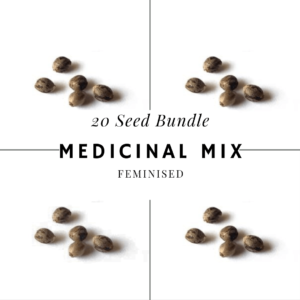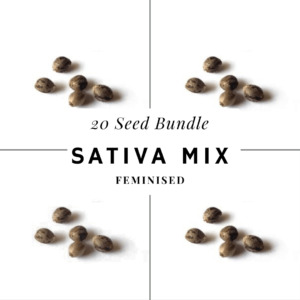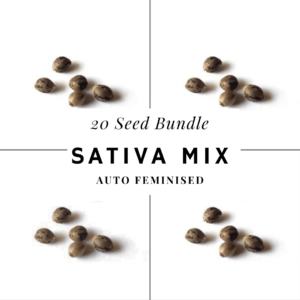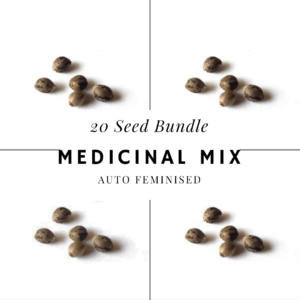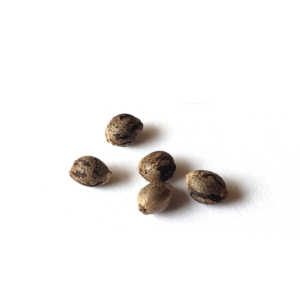If someone had told me years ago that I would be using cannabis for pain relief, specifically to manage my chronic joint and back pain, I might have been skeptical. But here I am, sharing my personal journey of discovering the powerful pain-relieving properties of cannabis pain relief and how it has not only improved my quality of life but also allowed me to move away from relying on pharmaceuticals and their terrible side effects.
As we delve deeper into the realm of cannabis for pain relief, it’s crucial to comprehend the science, facts, and research that underpin it. But it’s also important to share my personal journey, the transformation that took place in my life when I embraced cannabis as a pain management tool.
Goodbye Painkillers
Coming off painkillers was no easy feat. The withdrawal symptoms were challenging, and the fear of unmanaged pain was always at the back of my mind. However, the introduction of cannabis into my pain management regimen marked a turning point in my journey. The transition was gradual, but the changes were profound.
I started noticing improvements in my overall health and well-being. The constant fog that had been a side effect of the painkillers began to lift. I found myself more present, more engaged in my day-to-day life. My sleep improved, and so did my mood. I was able to participate in activities that I had previously avoided due to pain or the fear of pain.
But the most significant change was in my quality of life. I was no longer just surviving each day, but actually living. I was able to enjoy simple pleasures that I had taken for granted before the onset of chronic pain – a walk in the park, a game with my kids, a peaceful night’s sleep.
Switching to cannabis for pain relief wasn’t just about managing pain. It was about reclaiming my life from the clutches of chronic pain and the side effects of pharmaceuticals. And while cannabis may not be the solution for everyone, it was, without a doubt, a game-changer for me.
Cannabis Pain Relief: Key Takeaways
Exploring Cannabis Pain Relief involves understanding its long history of use to treat pain, navigating regulations for access and learning from personal experience.
THC & CBD have different properties. Consult a professional to find the best option for you.
Clinical evidence supports cannabis as an effective treatment for chronic non-cancer pain but consulting a healthcare professional is essential before using it.
Understanding Cannabis and Pain Relief

Cannabis has been used to treat pain for over 5,000 years, with early Chinese physicians using it for conditions such as:
childbirth pain
rheumatic pain
malaria
constipation
Despite this long history, the use of medicinal cannabis for both chronic pain and acute pain management is still a subject of ongoing research and debate.
The regulatory landscape for prescribing medical cannabis varies from state to state, making it difficult for patients suffering from chronic pain to access this potential source of relief. My personal experience with chronic joint and back pain led me to explore cannabis as a treatment option. I was on a multitude of painkillers and opiates, which came with terrible side effects. Since turning to medicinal cannabis, I no longer rely on pharmaceuticals, and my quality of life has improved beyond measure. It feels amazing to be free from the “big pharma system”, but also to have experienced such a wonderful reduction of my chronic pain. Only when I came off the opiates did I really find out just how terrible they are for your physical and mental health.
Conditions and Ailments Treated with Cannabis
Cannabis has been used for its medicinal properties for centuries and is currently employed to alleviate symptoms in a variety of conditions. Here are some of the most common ailments where cannabis has shown promising results:
Chronic Pain
As discussed extensively in this article, one of the primary uses of cannabis is for the relief of chronic pain. Conditions that cause chronic pain, such as arthritis, fibromyalgia, endometriosis, and migraine, may benefit from cannabis use.
Multiple Sclerosis
Cannabis may help alleviate the muscle spasms experienced by individuals with multiple sclerosis. While it doesn’t cure the disease, it can help with the discomfort and uncontrollable muscle contractions.
Nausea and Vomiting
Cannabis, particularly strains high in THC, can help control nausea and vomiting. It’s often used by cancer patients who experience these side effects from chemotherapy.
Epilepsy
Specific types of cannabis, particularly strains high in CBD, have shown promise in treating certain types of epilepsy, including Dravet syndrome and Lennox-Gastaut syndrome.
Mental Health Disorders
Some mental health disorders, such as depression, anxiety, and post-traumatic stress disorder (PTSD), may be managed with cannabis use. However, it’s important to note that in some cases, cannabis can exacerbate symptoms, so it’s crucial to use it under the guidance of a healthcare professional.
Glaucoma
Cannabis has been used to treat glaucoma by reducing intraocular pressure. It’s not a cure, but it can help slow the progression of the disease.
Insomnia
Cannabis, particularly strains high in THC, can induce drowsiness and help individuals who struggle with insomnia.
It’s important to remember that while cannabis can help manage symptoms of these conditions, it should not replace traditional therapies unless advised by a healthcare professional. Always consult with a healthcare provider before starting any new treatment regimen.
THC vs. CBD
Discussing cannabis necessitates a distinction between THC and CBD, the plant’s two primary components. THC is the psychoactive component responsible for the “high” associated with cannabis, while CBD is a non-psychoactive compound that has gained popularity for its potential benefits, including relief from neuropathic pain caused by conditions like spinal cord injury.
CBD has been the focus of research for its potential use in treating various conditions, including addiction, drug withdrawal, and providing significant pain relief. On the other hand, THC has been associated with side effects like dizziness, increased appetite, drowsiness, mood changes, anxiety, and impaired cognition and attention. However, when using THC for pain management, starting with a low dose (2.5-5 mg/day) and gradually increasing it up to 10-20 mg/day can help avoid potential side effects and acute intoxication.
Interestingly, the interplay between THC and CBD can have a significant impact on pain relief. FAAH inhibitors, for example, could provide pain relief by increasing endocannabinoid concentrations in the body. Pain and inflammation control depend on the endocannabinoid tone, which is regulated by enzymes that manage the production, transport, and breakdown of endocannabinoids.
The choice between THC and CBD for pain relief depends on several factors, such as the type of pain, personal preferences, and potential side effects. Consulting a healthcare professional can help guide individuals in selecting the most appropriate cannabis product for their specific needs.
Clinical Evidence Supporting Cannabis Pain Relief

While there is a growing interest in the use of cannabis for pain relief, it is essential to review the clinical evidence supporting its effectiveness in treating various types of chronic pain, including neuropathic pain, fibromyalgia, and arthritis.
A review by Australian researchers concluded that the evidence supporting the effectiveness of cannabinoids in chronic non-cancer pain is limited. The primary outcomes for assessing the effectiveness of medicinal cannabis in treating chronic non-cancer pain include the impact of pain and pain management on patient functioning and quality of life. Despite a few studies suggesting that nabilone, cannabis sativa, THC:CBD extracts, and ajulemic acid may be more effective than placebo in producing a 30% reduction in pain, the evidence is limited due to the small sample sizes of these studies.
Further research, including randomised controlled trials and other clinical trials, is necessary for a better understanding of medicinal cannabis’s role in chronic pain management and for establishing clear usage guidelines.
Neuropathic Pain
Neuropathic pain, a common type of chronic pain, has been a focus of research on cannabis for pain relief. One study of 20 individuals with chronic neuropathic pain showed that taking 120 mg/day of CBD was more effective than taking a placebo. However, potential drug interactions and adverse events should be carefully considered when using cannabis for neuropathic pain.
While more research is necessary to form definitive guidelines for using cannabis for chemotherapy induced neuropathic pain, existing evidence suggests a potential 50% reduction in pain and lower pain scores for patients using medicinal cannabis, compared to those on a placebo.
Fibromyalgia and Arthritis
Research on cannabis for pain relief in fibromyalgia and arthritis is still in its infancy, with limited evidence available to support its use in these conditions. A study conducted in Israel showed that patients who used consumed cannabis for several months experienced less cancer-related pain and improved quality of life. However, more research is needed to determine the effectiveness of cannabis in treating pain caused by fibromyalgia and arthritis.
Consulting a healthcare professional is necessary to decide on the most suitable cannabis product and administration method for pain relief in cases of fibromyalgia and arthritis. This will ensure that patients receive the most effective treatment while minimizing potential risks and adverse effects.
Cannabis Treatment Options for Chronic Pain

There are various cannabis treatment options for chronic pain, including pharmaceutical-grade products and alternative methods of administration. Pharmaceutical-grade products, such as nabiximols, dronabinol, and THC extracts, have been rigorously tested and certified for their safety and effectiveness. On the other hand, recreational cannabis typically has higher THC concentrations, while medicinal cannabis has higher CBD concentrations to minimize psychoactive effects.
In managing and trying to treat chronic pain, I experimented with various cannabis products and administration methods for treating chronic pain. I discovered that edibles offered me the most substantial pain relief…. by far!
Pharmaceutical-Grade Products
Pharmaceutical-grade medicinal cannabis products are an excellent option for those seeking safe and effective pain relief. These products, such as nabiximols, dronabinol, and THC extracts, have undergone rigorous testing and certification for their safety and efficacy.
The differences between recreational and medicinal cannabis lie in their concentrations of THC and CBD. For pain relief:
THC formulations have the strongest evidence for reducing chronic pain symptoms
CBD-dominant products have limited data demonstrating their efficacy
Balanced THC/CBD combination medicines have also shown efficacy for chronic pain relief.
Discussing with a healthcare professional about the most suitable pharmaceutical-grade product for your specific pain needs is necessary. This discussion should consider potential benefits and risks associated with each product.
Alternative Methods of Administration
Alternative methods of cannabis administration, such as vaporization and edibles, can also provide pain relief for individuals with chronic pain. Vaporization involves heating cannabis plant material or concentrates without burning it, producing aerosolized cannabinoids and terpenes that can be inhaled for therapeutic effects.
In my experience, alternative methods of administration, such as vaporization and edibles, have provided significant pain relief.
Potential Risks and Adverse Effects of Cannabis for Pain Relief

As with any treatment, there are potential risks and adverse effects associated with using cannabis for pain relief. In my personal experience, I have encountered some adverse events while using cannabis for pain management, but these were manageable and did not outweigh the benefits I experienced.
Some potential adverse events related to cannabis use include:
Dizziness
Nausea
Drowsiness
Changes in mood, thinking, and focus
Moreover, the long-term use of medicinal cannabis for chronic non-cancer pain requires further research to determine potential adverse effects.
Weighing the potential benefits of using cannabis for pain relief against possible harms to patients is critical. Any prescription of medicinal cannabis should consider harm minimization, especially for those who drive or operate heavy machinery.
Adverse Events
Potential adverse events associated with cannabis use should be carefully considered when using it for pain relief. Withdrawal syndrome, for example, can occur when suddenly stopping cannabis use and may cause sleep disturbances, depression, and irritability.
Moreover, using medicinal cannabis has been linked to worsening mental illnesses like schizophrenia. In one study, around half of the people with cannabis-induced psychosis ended up being diagnosed with schizophrenia or bipolar disorder. Monitoring and managing adverse events related to cannabis use is critical for ensuring safe and effective pain management.
Drug Interactions
Potential drug interactions with cannabis should also be considered when using it for pain management. CBD, for example, can interact with certain drugs because it interacts with cytochrome P450 (CYP 450) enzymes involved in drug metabolism.
Cardiovascular medications, prescription medications, warfarin, tamoxifen, and painkillers are all known to interact with cannabinoids. These interactions can result in:
Bleeding complications
Increased drowsiness
Reduced heart rate and breathing rate
Extreme confusion
Memory problems
Nausea
A healthcare professional’s consultation is necessary to assess the potential benefits and risks of using cannabis for pain relief, including potential drug interactions and monitoring the patient’s treatment response.
Cannabis as an Adjunct or Alternative to Opioids
In my personal experience, using cannabis for pain relief has allowed me to reduce my opioid use and dependence significantly.
A recent study showed a 64% reduction in opioid use among chronic pain patients who used medical marijuana, resulting in fewer side effects and an improved quality of life. Another study on CBD-rich gel for chronic pain patients taking opioids found that half of the patients managed to cut back on their opioid medications, with two even stopping opioids altogether.
Cannabis may offer a promising alternative or adjunct to opioids for pain relief. It has the potential to:
Optimize pain control
Reduce opioid withdrawal symptoms
Improve outcomes of opioid-replacement therapies
Reduce prescription opioid intake
Patient Considerations and Guidelines for Cannabis Use in Pain Management
Patients considering cannabis for pain relief need guidance to ensure their pain management is safe and effective. Selecting the right cannabis product and consulting a healthcare professional can help patients make informed decisions about their treatment options.
In my experience, collaborating closely with healthcare professionals and identifying the suitable cannabis product for my pain relief has been pivotal in effectively managing my chronic pain.
It is important to discuss any concerns or questions with a healthcare professional, who can provide valuable insight and guidance on the potential benefits and risks of using cannabis for pain management, as well as monitoring progress and adjusting treatment plans if needed.
Selecting the Right Product
Choosing the appropriate cannabis product for pain relief is an important step in managing chronic pain. Factors to consider include the type of pain, personal preferences, and potential side effects. The role of terpenes in cannabis products should also be considered, as they can interact with cannabinoids like CBD and THC to boost their pain-relieving powers, known as the ‘entourage effect’.
Consulting a healthcare professional or knowledgeable dispensary staff can assist individuals in choosing the most suitable cannabis product for their specific pain needs, considering the potential benefits and risks associated with each product.
Summary
In conclusion, the use of cannabis for pain relief offers a promising alternative or adjunct treatment for individuals suffering from chronic pain. While more research is needed to fully understand its role in pain management, existing evidence and personal experiences suggest that cannabis can provide significant pain relief for various types of chronic pain.
As we continue to explore the potential of cannabis in pain management, it is essential to consult with healthcare professionals, select the right product, and consider the potential risks and adverse effects associated with its use. With the proper guidance and support, cannabis can be a powerful tool in improving the quality of life for those living with chronic pain.
Frequently Asked Questions
How does eating or smoking cannabis help with pain?
Smoking cannabis helps to alleviate pain by targeting cannabinoid receptors and aiding the passing of messages between nerve cells, making it a useful treatment for neuropathic pain.
Is THC or CBD better for pain?
Overall, it appears that THC may be more effective in reducing pain perception while CBD may work to ease the physical pain itself. Therefore, it would depend on the type of pain being experienced as to which is better. Check this article.
How long does cannabis take to work for pain?
Cannabis can start relieving pain in as little as 20 minutes and can take up to an hour to take full effect. For ongoing treatment, ingestion is the best option.
What are the main components of cannabis that can provide pain relief?
Cannabis provides pain relief through its two main components, THC and CBD. THC is the psychoactive component while CBD is non-psychoactive and has potential benefits for various conditions, including neuropathic pain. Read here.
What is the current state of research on cannabis for pain relief?
Research on cannabis for pain relief is still ongoing, with evidence suggesting its effectiveness but requiring further studies before clear guidelines can be established.






